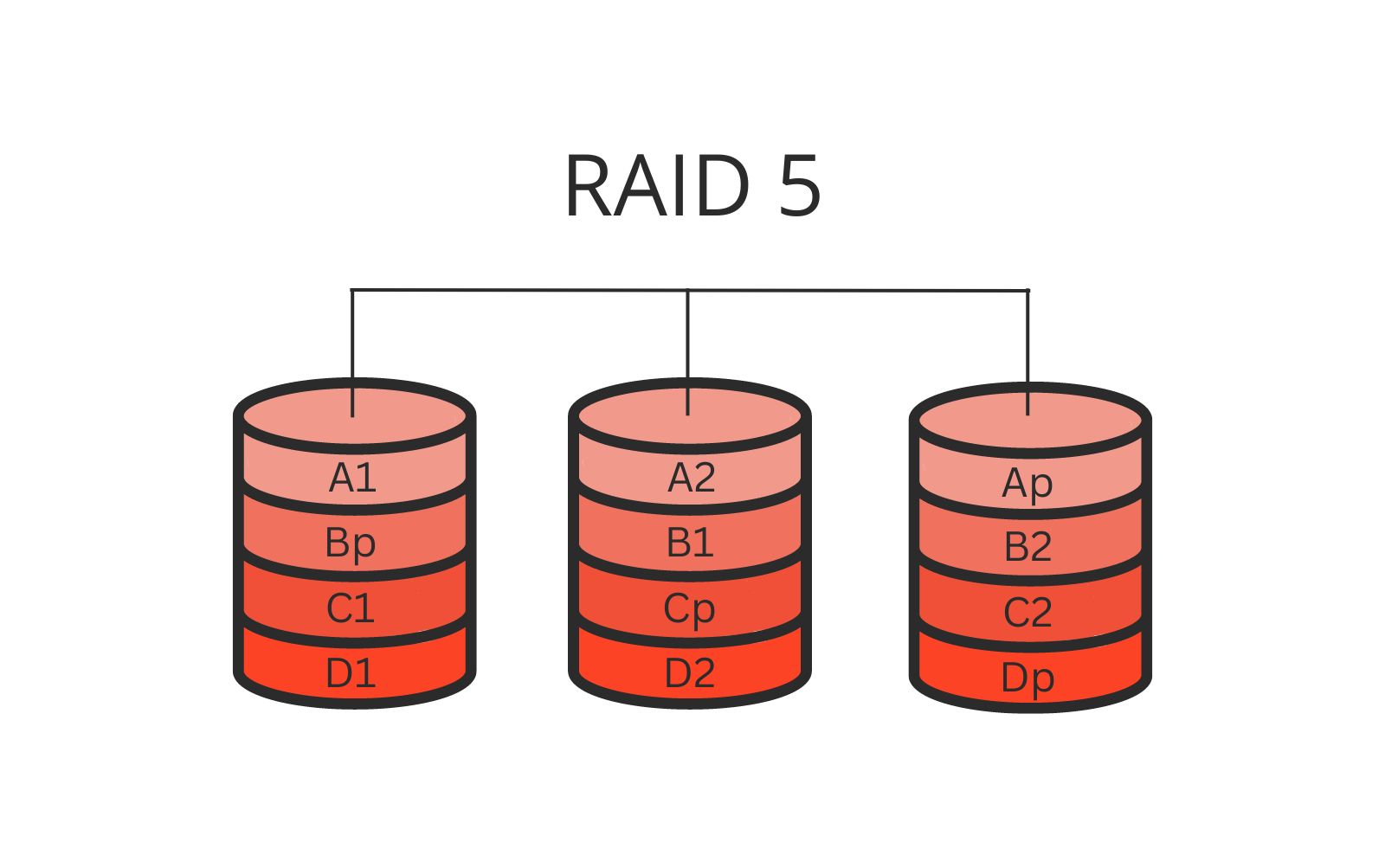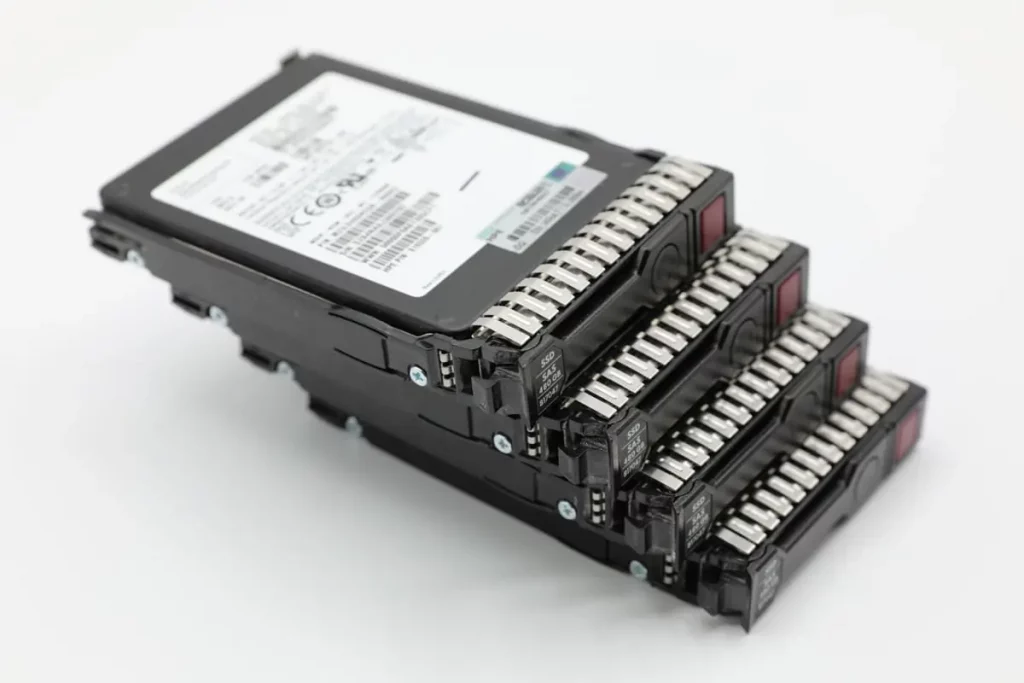In the realm of data recovery, challenges often arrive unannounced and come in various forms, from simple drive failures to complex RAID corruptions. At PITS Global Data Recovery Services, we pride ourselves on being prepared for any data recovery scenario.
In this blog, we will delve into a recent case involving a RAID 5 setup on a macOS system. One of the four drives in the RAID had failed. Here, we will explore the different scenarios that can unfold when drive failures occur in a RAID 5 and reveal how our expert team skillfully recovered the client’s vital data.
Understanding RAID 5 and Drive Failures
Before delving into the intricacies of our data recovery process, let us establish a fundamental understanding of RAID 5 and the implications of drive failures in such a setup.
RAID 5 Explained
RAID, which stands for Redundant Array of Independent Disks, is a technology used to combine multiple hard drives into one logical unit to enhance performance and data redundancy. RAID 5 is a popular choice for businesses and individuals alike. In a RAID 5 configuration, data is striped across multiple drives, and parity information is distributed among them.

The Impact of Drive Failures in RAID 5
If one drive fails in RAID 5, the system can continue to function. The remaining drives can still serve data to the operating system and applications. However, data redundancy, a key feature of RAID 5, is compromised.
If more than one hard drive fails in RAID 5 during this vulnerable state, data loss becomes inevitable. Hence, addressing a disk drive failure of RAID system in a timely manner is paramount.
"*" indicates required fields
How We Recovered Data from RAID 5 with 1 Failed Drive
When our client contacted us with a RAID 5 issue on their macOS system, we knew it was a situation requiring immediate attention. The initial evaluation revealed that one of the four drives had failed, putting the client’s critical data at risk. Now, let us break down our comprehensive data recovery process step by step:
Step 1: Evaluation of the RAID 5 with One Disk Failure
Our highly skilled technicians began by diagnosing the problematic drive and assessing the extent of the damage.
This step is crucial in understanding the specific issue that led to the drive failure.
By carefully examining the failed drive, we gained insights into the nature of the failure, which can range from mechanical issues to logical errors. A thorough assessment is essential to determine the next course of action.
Step 2: Rebuilding RAID 5 with 1 Failed Drive
With one drive in the RAID 5 configuration having failed, we could proceed with rebuilding the array. Rebuilding the array is a process where the data from the failed drive is reconstructed using the remaining drives in the RAID setup. This not only restores data integrity but also reinstates data redundancy, ensuring that the system is once again capable of tolerating a single drive failure.
The rebuilding process is intricate and involves recalculating the parity information and redistributing it across the drives. During this phase, the system is in a somewhat vulnerable state, as another drive failure could result in data loss. Hence, swift and accurate execution of this step is crucial.
Step 3: RAID 5 Mac Data Recovery
Our experienced engineers meticulously set to work on recovering the client’s data from the failed drive. We employed specialized RAID data recovery method that is designed to handle the complexities of RAID 5 arrays. This technique plays a vital role in ensuring a high success rate in retrieving the missing files.
During the data recovery process, we focus on extracting data from the failed drive while ensuring its integrity. Each piece of data is meticulously reconstructed, and file systems are examined for consistency. Our commitment to data recovery excellence means that no detail is too small to overlook.
Step 4: Verification Session after Recovering RAID 5 with 1 Disk Failure
Before delivering the restored data to the client, we perform a verification session. This involves connecting the client to our secure system, granting them access to review and approve the recovered files. This step is crucial to ensuring that the client’s expectations are met, and it also serves as a final check for data integrity and accuracy.
We understand the impact of data loss, and our approach is rooted in transparency and client satisfaction. The verification session allows our clients to witness the successful recovery firsthand, reinforcing their confidence in our services.
Step 5: Safe Data Transfer after Completing RAID 5 Data Recovery
Once the client has reviewed and approved the restored data, we take an additional step to ensure data security and longevity. We copy all the recovered files to a brand-new external drive. This transfer ensures that the client’s data is not only accessible but also well-protected against any potential future issues.
Data security is a top priority for us, and we take every precaution to safeguard the valuable information we recover. The client can rest assured that their data is in the safest hands possible.
Advantages of PITS Global for Failed RAID Drives
Our success in recovering data from RAID 5 with one failed drive is a testament to the expertise and dedication of our team. At PITS Global Data Recovery Services, we offer a range of advantages that set us apart in the data recovery industry.
With a 100% success rate in this case, we take immense pride in our ability to recover data from various RAID levels, including RAID 5, even under challenging circumstances. Our track record speaks volumes about our proficiency in data recovery.
Our team of skilled engineers boasts extensive experience in data recovery. They are well-versed in handling a wide array of data recovery scenarios, from drive failures to complex RAID setups. Equipped with cutting-edge technology and software, they are prepared to tackle any challenge.
RAID 0 Data Recovery
RAID 1 Data Recovery
RAID 5 Data Recovery
RAID 6 Data Recovery
RAID 10 Data Recovery
RAID 50 Data Recovery
We prioritize the security and privacy of your data. Our secure data transfer processes and the use of state-of-the-art encryption techniques ensure that your data remains confidential and protected at all times.
When it comes to RAID 5 recovery and handling a single failed drive, PITS Global Data Recovery Services stands as your trusted partner. Our relentless commitment to data recovery, coupled with our skilled engineers and advanced technology, guarantees that your storage device is in the safest and most capable hands.
Do not let drive failures or RAID issues lead to data loss – reach out to us for expert assistance and peace of mind. Your data recovery success story begins with us, and we are ready to make it a reality.
Frequently Asked Questions
What happens if one drive fails in a RAID 5 setup?
When one drive fails in a RAID 5 setup, the array can continue to operate, but data redundancy is compromised. If another drive fails during this state, data loss is inevitable. Prompt action is crucial to prevent further data loss.
How does PITS Global Data Recovery Services rebuild a RAID 5 array with a failed drive?
Our experts rebuild the array by using the remaining drives to recreate the data on the failed drive. This process involves recalculating the parity information and redistributing it across the drives to ensure data integrity and redundancy.
What is the success rate of PITS Global Data Recovery Services for RAID 5 data recovery?
PITS Global Data Recovery Services boasts a 99% success rate in recovering data from RAID 5 arrays, even when one drive has failed. Our experienced engineers and advanced technology contribute to our high success rate.
How does the verification session work, and why is it important?
The verification session allows the client to review and approve the recovered files, ensuring data accuracy and client satisfaction. It’s an essential step in the process, promoting transparency and client confidence.
How do you prioritize data security during the data recovery process?
Data security is our top priority. We employ secure data transfer processes, encryption techniques, and ensure that recovered data is copied to a brand-new external drive to protect it against potential future issues.
Can PITS Global Data Recovery Services handle data recovery for other RAID levels besides RAID 5?
Yes, we are well-equipped to handle data recovery for various RAID levels, including RAID 0, RAID 1, RAID 10, and more. Our expertise extends to different RAID configurations and scenarios.
